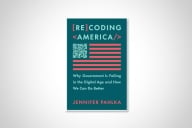You have /5 articles left.
Sign up for a free account or log in.
Quick, which is the better deal:
Watch videos online and pay $649 for three credits.
Take a class with a human being and pay $252 for three credits.
If you said “a,” congratulations -- you’re part of the one percent!
Last Spring, I asked in this venue exactly what problem ASU and EdX thought they were solving. Now we have the first attempt at an answer. According to over 99 percent of the students who signed up for a MOOC through the ASU/EdX partnership, they weren’t.
That’s not necessarily a bad thing, of course. To the extent that folks watched MOOCs in the same way that they watch, say, TED talks, I don’t see the harm in it. But to the extent that the partnership was supposed to be about opening pathways to bachelor’s degrees, it doesn’t come close to comparing to the already-established route of starting at a community college -- in this case, I used the tuition rate of Maricopa Community College, the largest feeder to ASU -- and transferring.
The program didn’t even follow the usual “script” for “disruptive innovations.” It came in at a higher cost than a respected, existing alternative. That’s not how disruption is supposed to work. I have to wonder at the implied invisibility of the single largest sector of American higher education, but that’s another discussion.
ASU was essentially trying to charge premium prices for Prior Learning Assessment and hope nobody would notice. A savvy student could simply watch the MOOC and then take a CLEP exam for credit for less than a hundred bucks. I admire the audacity of the effort, though I admire more the clarity with which most people saw it.
I guess it’s possible to construct a scenario in which the partnership is a good deal. Maybe it works well for the Starbucks employees who get a special deal with ASU. I suspect Starbucks could get a better deal working with community colleges, but hey, it’s their money. Outside of something relatively idiosyncratic, though, I’d be hard pressed to explain why a student wouldn’t be better off taking classes at a community college with an actual professor.
Wise and worldly readers, am I missing something here? Is there a subtle wisdom to the arrangement that goes deeper than brazen overcharging?
Program note: ‘tis the season, so the blog will go on its annual holiday hiatus until January 4. Now if you’ll excuse me, I have an “ugly sweater” competition to win...



